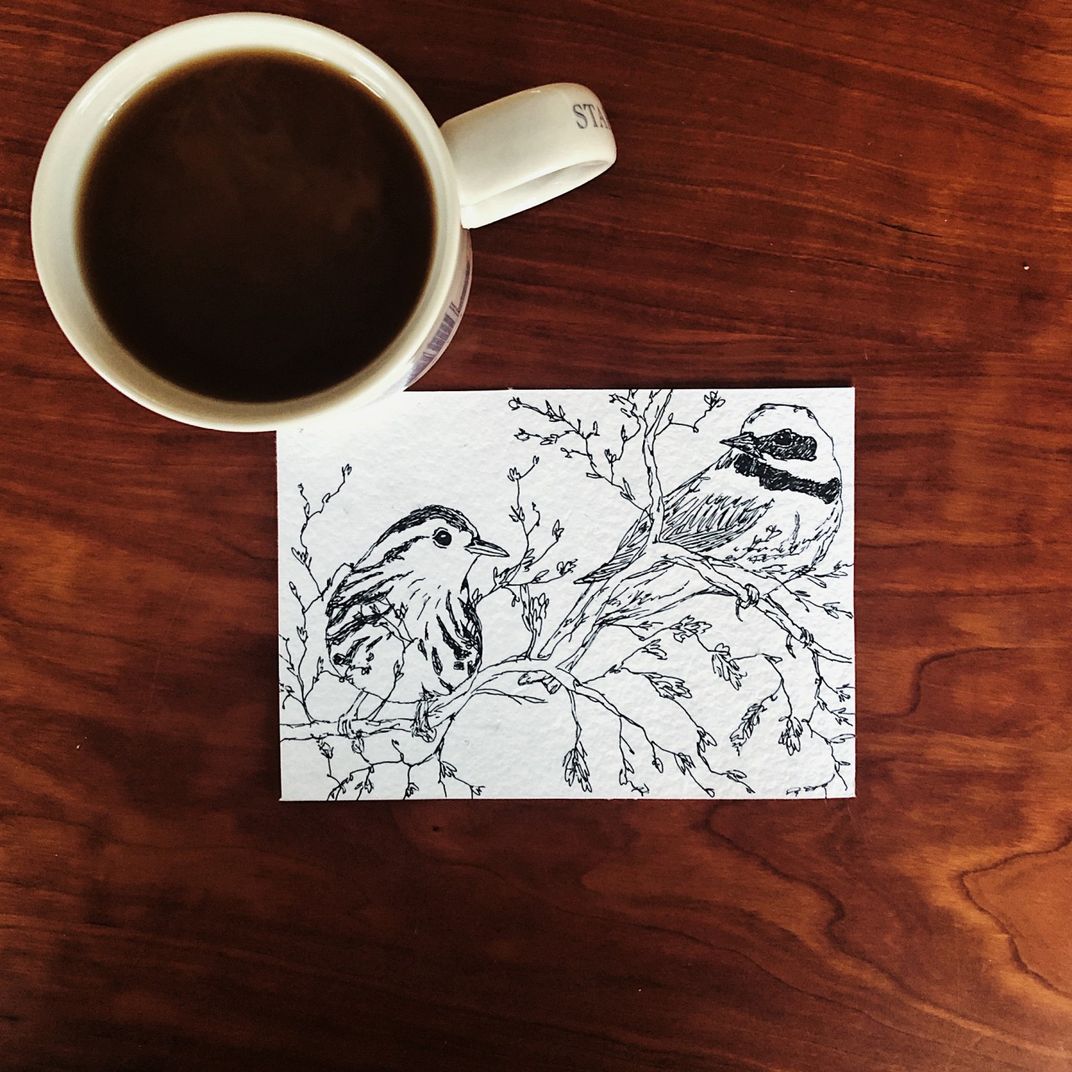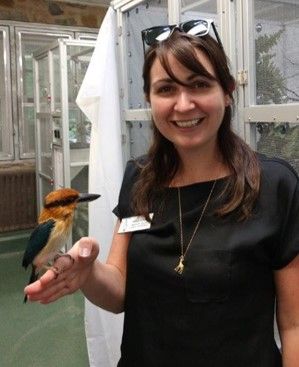A New Smithsonian Guide for How You Can Make Your Daily Routine More Sustainable
A collaboration with USA TODAY, the publication also spotlights the scientists, historians, artists, and youth tackling environmental challenges
:focal(600x343:601x344)/https://tf-cmsv2-smithsonianmag-media.s3.amazonaws.com/filer_public/89/58/8958403b-aa01-47db-b32a-bc4ec0cf5ed9/twitter.jpg)
The Smithsonian Institution extends beyond the National Mall in Washington, D.C. and the walls of its museums. From cryopreserving corals in Hawaii, preserving coastal ecosystems in the Chesapeake Bay, and seeking environmental justice in D.C. to studying tropical ecosystems in Panama, researching migrating wildebeest in Kenya, and monitoring air pollution from space, the Smithsonian truly has a national and global reach. More than its buildings, the Smithsonian is made up of people—scientists, historians, artists, educators, teens, and communities, including you! People are at the heart of environmental actions that can create a more sustainable future. Stories of some of these people and actions are captured in the new guide from the Smithsonian and USA Today, and the guide invites you to consider your role in our shared future for life on a sustainable planet.
/https://tf-cmsv2-smithsonianmag-media.s3.amazonaws.com/filer_public/91/b0/91b07686-220b-40f9-ac1d-08df021be855/zbzopxjy.jpeg)
With influences from the civil rights movement of the 1960s, individuals, primarily people of color, who sought to address the inequity of environmental protection in their communities started the Environmental Justice Movement. But what does environmental justice mean? Environmental justice is the fair treatment and meaningful involvement of all people regardless of race, color, national origin, or income, with respect to the development, implementation, and enforcement of environmental laws, regulations, and policies.
Launched on Earth Day 2023, the Anacostia Community Museum’s Center for Environmental Justice is a new research hub at the Smithsonian that will leverage history and current research to develop solution-based models by and for the people most affected by environmental injustice. The Center will build on the community museum’s long legacy of innovative leadership in this field, ranging from the late educator Zora Martin-Felton (1930-2022), whose many initiatives included a youth garden program and youth-led research projects on air quality to the late historian Dr. Gail S. Lowe (1950-2015), who developed a humanities-based framework under the “Urban Waterways” initiative that acknowledged the Anacostia River and its relationship to the communities and people connected to it. Today, the museum continues to honor this legacy through programming, exhibitions, and digital initiatives that bring the community together about the issues they care about most.
“The health of a river in an urban community is an indication of the health of the community and its people.”
– Dr. Gail S. Lowe, late senior historian at the Anacostia Community Museum and founder of the “Urban Waterways” initiative
The environmental concerns in your region may be vastly different than the environmental actions needed in a different part of the country. From planting trees and plants that attract pollinators like bees in local parks of Lowell, Massachusetts to organizing beach clean-ups in Miami, Florida, or maintaining a compost program in Laurel, Maryland, teens across the country have led initiatives in their communities to address unique needs. They have come together in groups to volunteer and address issues that matter to them most, with mentorship from the Smithsonian’s National Zoo and Conservation Biology Institute and Smithsonian Affiliations, local museums, and other community partners.
Earlier this month, a group of scientists at the Smithsonian Astrophysical Observatory watched their scientific instrument, TEMPO (short for Tropospheric Emissions Monitoring of Pollution instrument), successfully lift off into space. This will be the first instrument to scan our continent hourly for air pollution, with the potential to revolutionize our understanding of what is in the air we breathe.
TEMPO will detect air pollution at its source and track it as it moves across the continent with detail down to the neighborhood level, enabling researchers to measure how air pollution is impacting different communities. This will help the 137 million Americans who, according to the American Lung Association, live in areas with poor air quality. This includes the many in historically marginalized communities and low-income populations that are disproportionately affected by air pollution.
While TEMPO is an out-of-this-world scientific feat, environmental actions can occur on any scale, and scientists aren’t the only ones with the ability to help. There are simple actions we can take in our daily lives that make a difference. To cut down on air pollution, consider alternatives to individual gas-powered vehicles like public transportation, walking, biking, or carpooling. To protect the ocean, reduce your use of single-use plastics that can end up in waterways. And to protect habitats on land, drink Bird Friendly coffee.

How can the coffee you drink save birds? Bird Friendly coffee is better for people and the planet. Most of the world’s coffee is farmed with practices that actively destroy forest habitat. Smithsonian scientists developed the Bird Friendly certification for coffee in the late 1990s to conserve habitat and protect migratory songbirds. Today, there are over 5,000 Bird Friendly farmers in 11 countries growing 34 million pounds of coffee annually. Bird Friendly certified coffee protects forest habitats, is 100% organic, meaning there are no harmful pesticides used, and provides hard-working Bird Friendly farmers with a premium for their products.
Bird Friendly coffee is one example of many actions that help protect our planet. As you go through the Smithsonian and USA Today guide, take a minute to self-reflect. What are you already doing to help the planet? Celebrate it! What story best resonates with you? Get involved! And what is one new action you can take? Start your new action on Earth Day but remember that sustainability is important every day of the year. Try setting reminders for yourself or gathering family and friends to participate and make sustainable actions part of your daily routine. It takes a collaborative, community effort to create positive and meaningful change. So, we invite you to join our Smithsonian community by getting involved and taking action today and any day of the year.
The "Sustainability in Action" guide is now available online for viewing and download, alongside additional digital resources that are featured throughout its pages. These digital resources include community science opportunity listings that you can participate in, a digital learning interactive that takes students underwater with a marine biologist, and a video interview from the National Museum of African American History and Culture that highlights emerging career paths with a contemporary oyster farmer building a career in the rapidly growing aquaculture industry.

